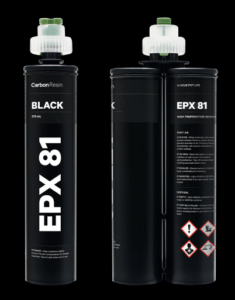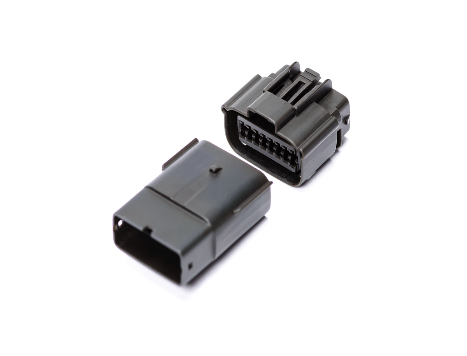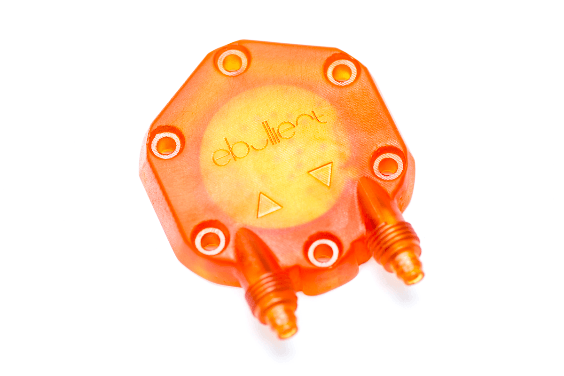Carbon Introduces New CLIP 3D Printing Materials with Epoxy Resin Family & Addition to Cyanate Ester Family
 It’s been a very busy year for Silicon Valley-based 3D printing company Carbon, but a successful one as well. After emerging from stealth with its cutting-edge CLIP 3D printing technology back in 2015, the company hit the ground running and didn’t stop, announcing in early 2016 that four partners, including Sculpteo, would begin using the high-speed CLIP technology; more partners have since been announced. Then Kodak announced that they would start helping Carbon develop new materials to advance CLIP even further. Last April, Carbon took the 3D printing world by storm with the release of its M1 commercial 3D printer, which can even (partially) print itself.
It’s been a very busy year for Silicon Valley-based 3D printing company Carbon, but a successful one as well. After emerging from stealth with its cutting-edge CLIP 3D printing technology back in 2015, the company hit the ground running and didn’t stop, announcing in early 2016 that four partners, including Sculpteo, would begin using the high-speed CLIP technology; more partners have since been announced. Then Kodak announced that they would start helping Carbon develop new materials to advance CLIP even further. Last April, Carbon took the 3D printing world by storm with the release of its M1 commercial 3D printer, which can even (partially) print itself.
![]() Earlier this year, automotive parts manufacturer Delphi tested out the CLIP technology in a real world setting with a CLIP case study. Carbon has introduced a brand new material family this week, and Delphi is back for more, having already leveraged the new resin to develop high-performing electrical connectors. The newly launched resin, EPX 81, the first in the epoxy resin family, helps Delphi’s connectors exceed wire terminal retention force on “what is possible with current injection molding techniques.”
Earlier this year, automotive parts manufacturer Delphi tested out the CLIP technology in a real world setting with a CLIP case study. Carbon has introduced a brand new material family this week, and Delphi is back for more, having already leveraged the new resin to develop high-performing electrical connectors. The newly launched resin, EPX 81, the first in the epoxy resin family, helps Delphi’s connectors exceed wire terminal retention force on “what is possible with current injection molding techniques.”
The new EPX 81 resin was designed for such high-precision applications in the industrial sector, and has mechanical properties similar to 20% glass-filled PBT, which is commonly used in fabrication of electrical connectors. The high-strength engineering material features top-notch abrasion resistance and a heat deflection temperature of 140°C.
 EPX 81 is a two-part engineering resin that comes in 375 mL cartridges, and needs to be mixed once it’s dispensed. When the material was put through its paces with a tensile test, its strength and stiffness were more than up to the challenge, withstanding over 85 MPa of stress before finally breaking.
EPX 81 is a two-part engineering resin that comes in 375 mL cartridges, and needs to be mixed once it’s dispensed. When the material was put through its paces with a tensile test, its strength and stiffness were more than up to the challenge, withstanding over 85 MPa of stress before finally breaking.
In addition to EPX 81, Carbon also announced that its high temperature Cyanate Ester family was getting a new resin, CE 221. This new resin features fluid compatibility and high temperature resistance, which are only “achievable with Carbon’s patented CLIP technology.”
We have talked before with Carbon about their approach to materials and the market, as CEO and Co-Founder Dr. Joe DeSimone told us:
“Our resin diversity is what helps provide the perfect fit solution in such a wide array of verticals, including automotive, industrial design, healthcare, aerospace, and consumer electronics.”
This Ebullient processor cooling module, made with CE 221, uses the resin to route coolant in an efficient manner, while holding up under elevated temperatures, inside servers and workstations. The strong material properties of CE 221 are said to be comparable to 14% glass-filled Nylon 6, with a 230°C heat deflection. The resin is stiff, with excellent thermal stability and chemical resistancel. Just like EPX 81, it comes in 375 mL cartridges, and as it is a two-part resin, needs to be mixed. This resin is the perfect choice for applications, such as under-the-hood components and electronics assemblies, that require long-term thermal stability. The combination of Carbon’s CLIP technology and CE 221 enables parts fabricate with this resin to have precision surface finish, as well as high-temperature resistance. Take a look at the video below to see how well it holds up under high temperatures:
As of its most recent funding round, Carbon has received $222 million in funding, and is working on speeding up production for global expansion. Discuss in the Carbon forum at 3DPB.com.
Subscribe to Our Email Newsletter
Stay up-to-date on all the latest news from the 3D printing industry and receive information and offers from third party vendors.
You May Also Like
3D Printing Unpeeled: New Arkema Material for HP, Saddle and Macro MEMS
A new Arkema material for MJF is said to reduce costs per part by up to 25% and have an 85% reusability ratio. HP 3D HR PA 12 S has been...
3D Printing News Briefs, January 20, 2024: FDM, LPBF, Underwater 3D Printer, Racing, & More
We’re starting off with a process certification in today’s 3D Printing News Briefs, and then moving on to research about solute trapping, laser powder bed fusion, and then moving on...
3D Printing Webinar and Event Roundup: December 3, 2023
We’ve got plenty of events and webinars coming up for you this week! Quickparts is having a Manufacturing Roadshow, America Makes is holding a Member Town Hall, Stratafest makes two...
Intuitive Machines Debuts $40M Hub for Lunar Ambitions and 3D Printing Tech
Best known for its pioneering work in lunar exploration and its development of the Nova-C lunar lander, Intuitive Machines (Nasdaq: LUNR) has marked yet another significant milestone. The leading space...

































